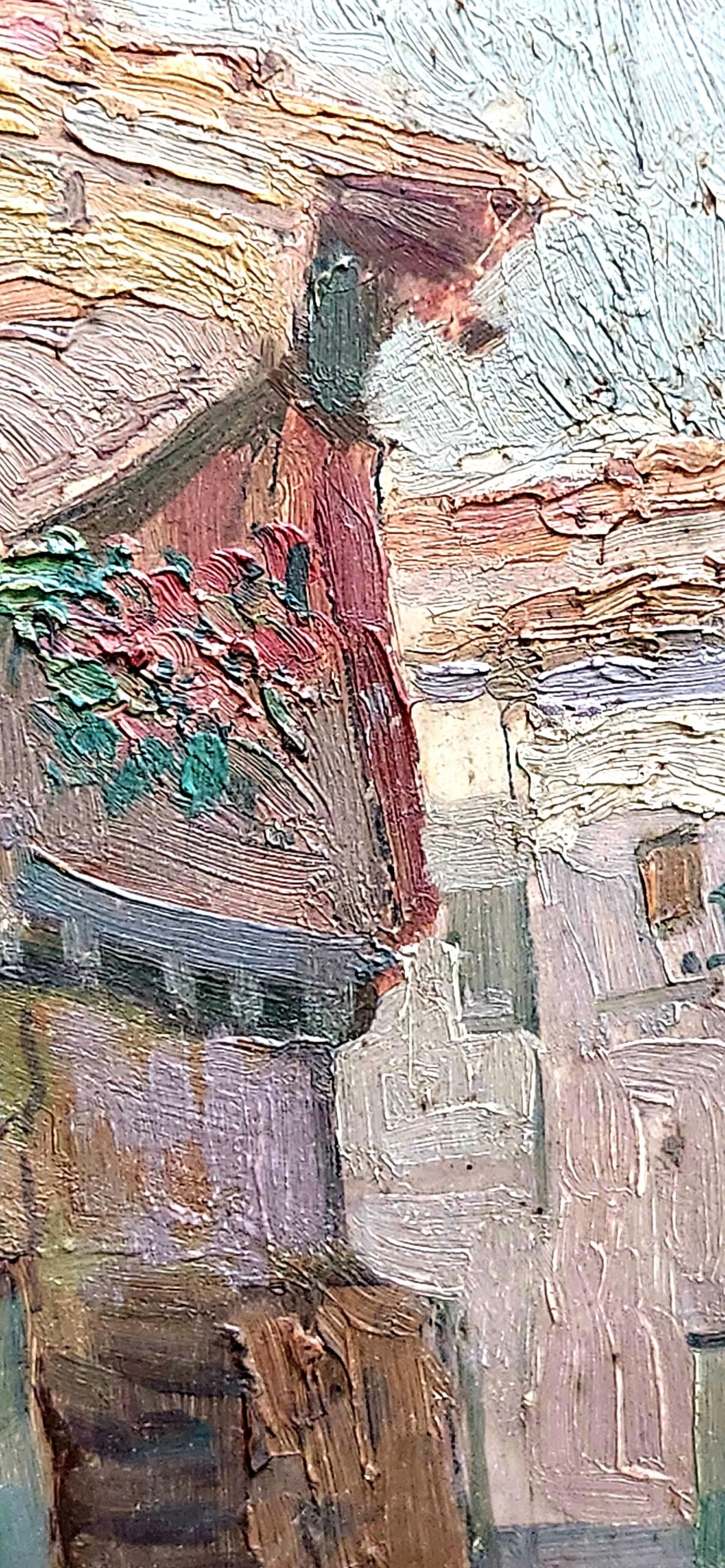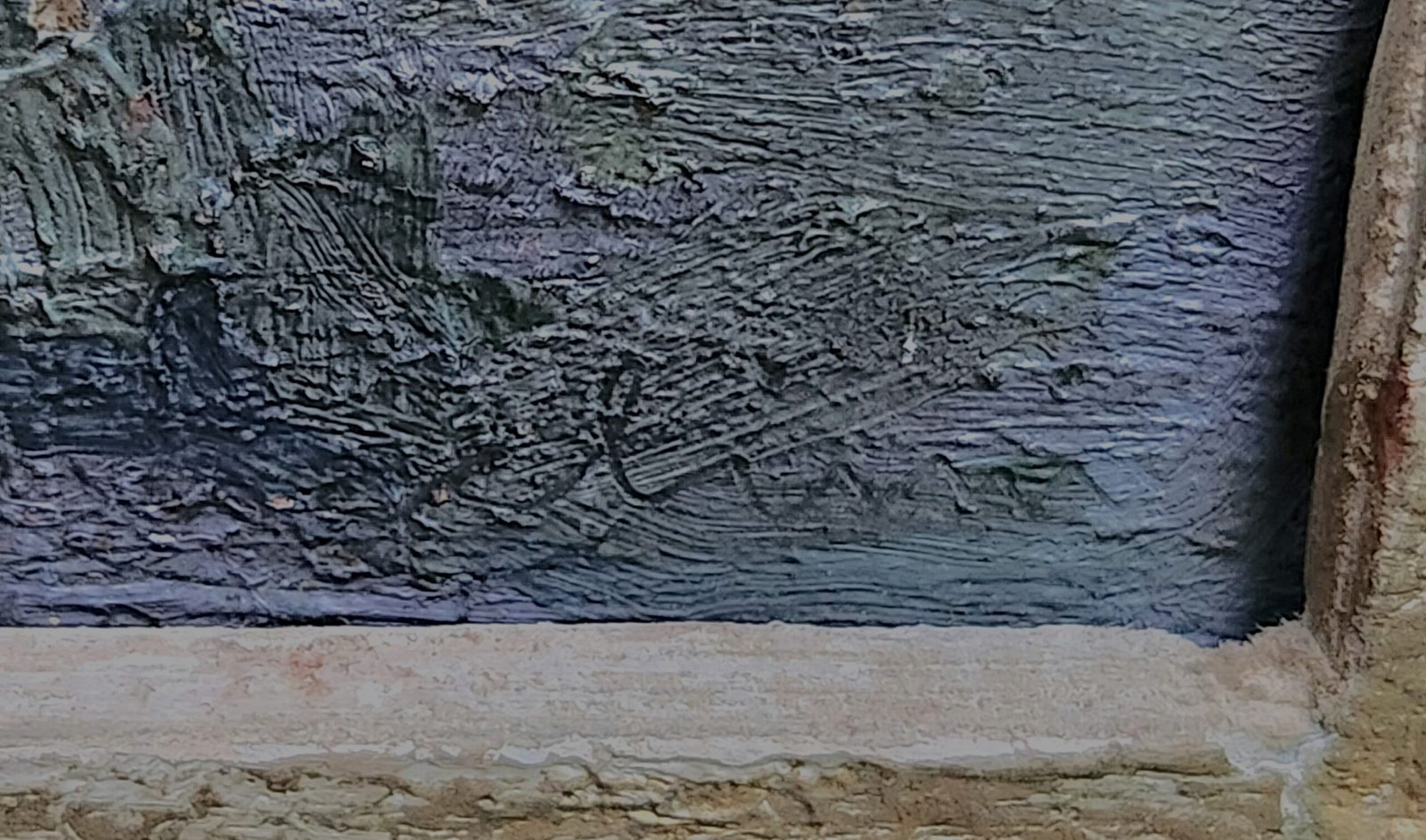Descripción
Old painting signed N Fechin ”village street”
oil on cardboard. town street
Signed lower right. N Fechin is appreciated. Possibly corresponds to the Russian artist FECHIN Nicolai Ivanovich (1881-1955)
Very good conditions. It only needs a minimum of cleaning.
Original wooden frame measurements, 44cm (17”) x 36cm (14”)
Unframed, 25cm (10”) x 19cm (7.5”)
Biography
Nicolai Fechin (Nikolai Ivanovich Feshin; Russian: Николай Иванович Фешин; 26 November 1881 – 5 October 1955) was a Russian-American painter known for his portraits and works featuring Native Americans. After graduating with the highest marks from the Imperial Academy of Arts and traveling in Europe under a Prix de Rome, he returned to his native Kazan, where he taught and painted. He exhibited his first work in the United States in 1910 in an international exhibition in Pittsburgh, Pennsylvania. After immigrating with his family to New York in 1923 and working there for a few years, Fechin developed tuberculosis and moved West for a drier climate. He and his family settled in Taos, New Mexico, where he became fascinated by Native Americans and the landscape. The adobe house which he renovated in Taos is listed on the National Register of Historic Places and is used as the Taos Art Museum. After leaving Taos in 1933, Fechin eventually settled in southern California.
Birth and early life
Nicolai Fechin was born in 1881 in Kazan, Russia. As a child, he almost died from meningitis. His father was a woodcarver and gilder, and the boy learned carving from him. By age eleven, the boy was drawing designs for his father to use in the construction of altars. At the age of 13, he enrolled in the newly established Kazan Art School, a branch of the Imperial Academy of Arts in the capital of St. Petersburg.
Based on his work, Fechin was admitted for further study to the Imperial Academy of Arts in Saint-Petersburg, where he studied with Ilya Repin and Filipp Malyavin. During the summer of 1904 he had an influential trip to Siberia, where he was fascinated by the landscape and native peoples. When I returned to Kazan, I often traveled outside the city to capture the rural people and places.
In 1909 Fechin graduated with the highest grade possible, and his final competitive canvas won him the Prix de Rome. The traveling scholarship allowed him to visit and study in the artistic capitals of Europe in 1909. The following year he won a gold medal at the annual International Exhibition in Munich. Fechin was invited to show his work at an international exhibition at the Carnegie Institute in Pittsburgh, Pennsylvania in 1910. He began to sell his work in the United States that year through W.S. Stimmel, a patron in New York.



